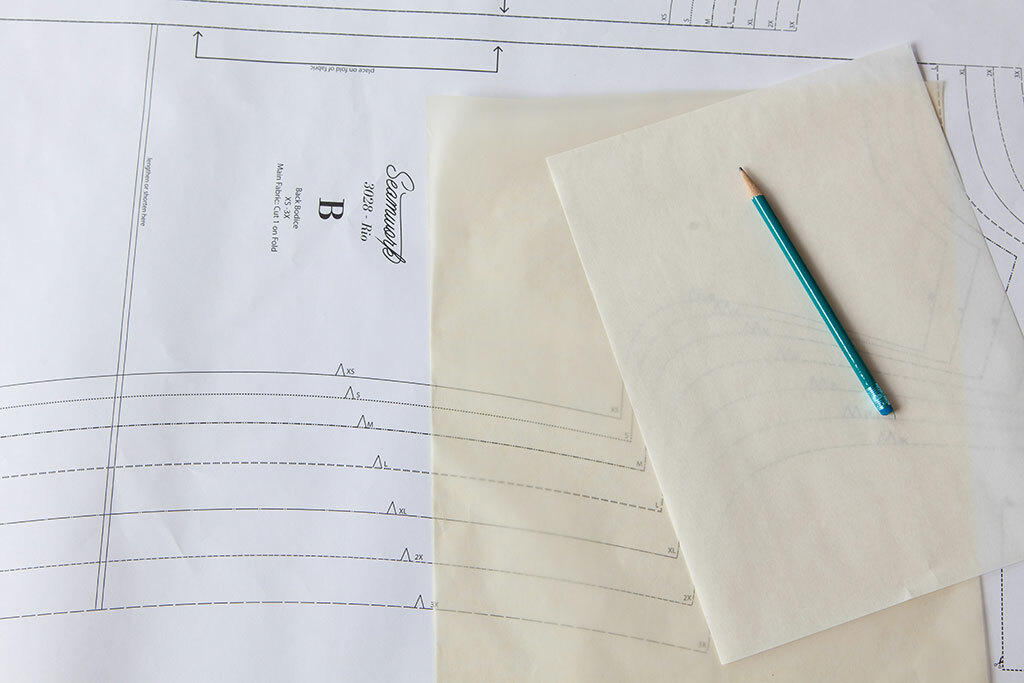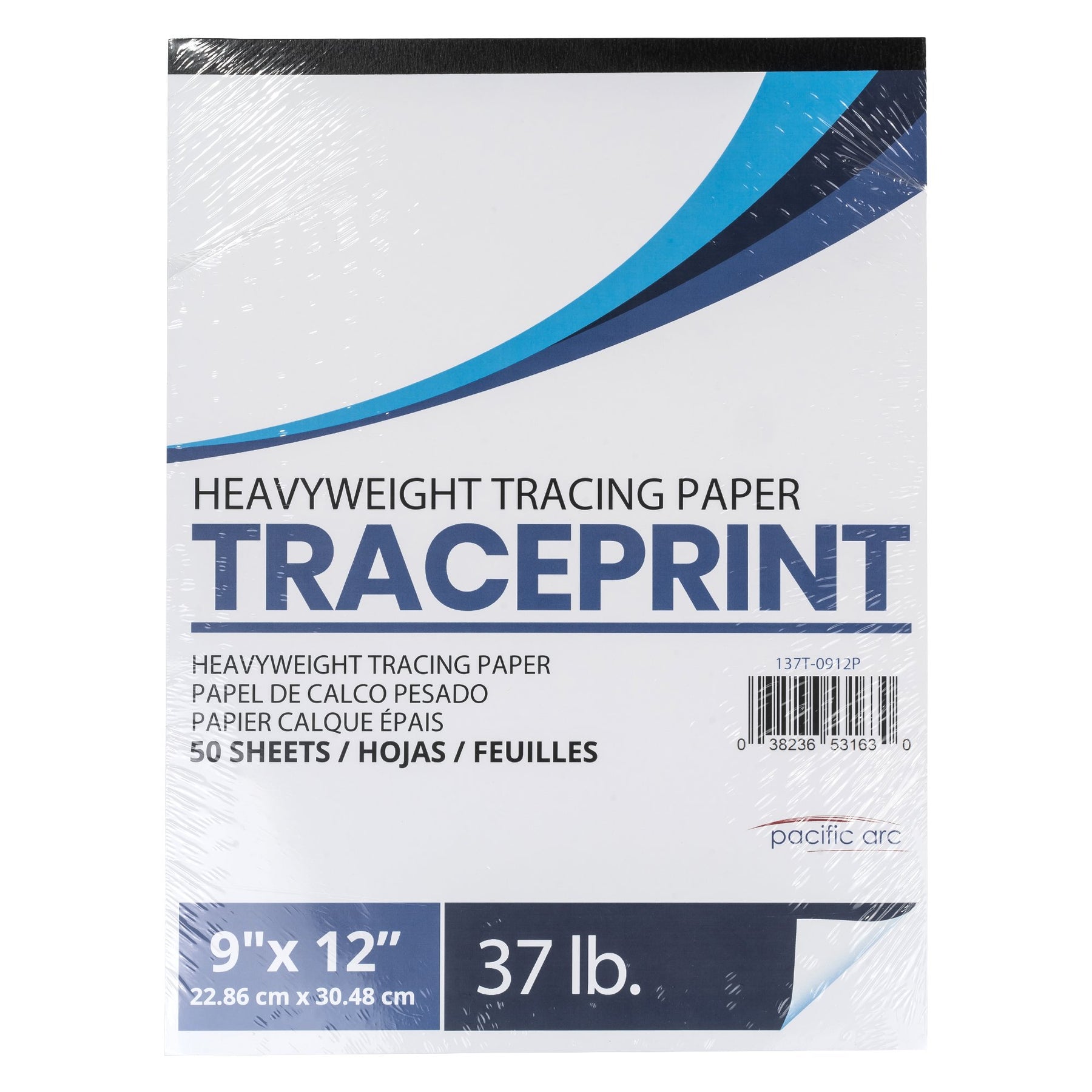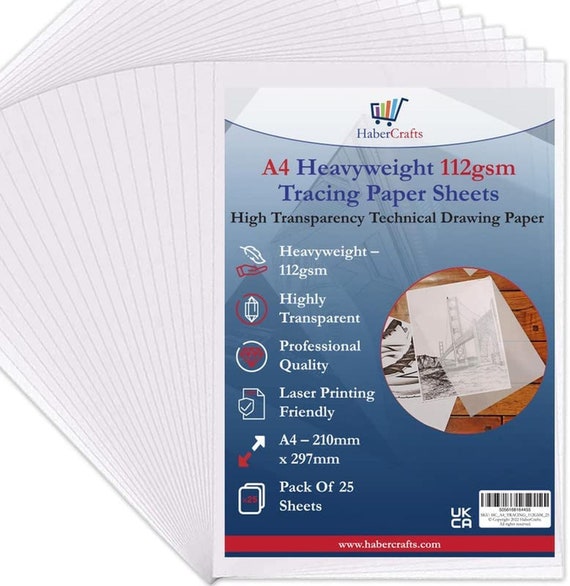What Are Heavyweight Tracing Paper Uses?
Uses and Benefits of Heavyweight Tracing Paper
Heavyweight tracing paper is a specialized type of tracing paper that offers unique advantages over standard options. It is typically made from cellulose fibers, which gives it a smooth and uniform texture. Unlike lighter weight tracing paper, heavyweight tracing paper is thicker, allowing it to maintain its integrity under various conditions. This makes it ideal for tasks that require durability, such as sketching, drafting, and creating overlays.
Key Characteristics and Advantages of Heavyweight Tracing Paper
The main characteristics of heavyweight tracing paper include its durability and translucency. Durability means this tracing paper can withstand repeated handling without tearing or wrinkling. Translucency allows light to pass through, making it suitable for tracing and overlaying images. This property lets artists and designers see the details underneath while working.
Here are several advantages of heavyweight tracing paper:
| Výhody | Vysvětlení |
|---|---|
| Odolnost | Resistant to tears and creases, even after multiple uses. |
| Průsvitnost | Offers excellent visibility for tracing underlying images or sketches. |
| Všestrannost | Can be used with various media like pencils, ink, and markers. |
| Hladký povrch | Ensures a clean finish for detailed work and design. |
| Thicker Weight | Ranges from 90 gsm to 112 gsm, providing a solid feel for serious projects. |
Common Applications in Various Fields
Heavyweight tracing paper finds utility in numerous creative fields, making it a valuable tool for both professionals and hobbyists. Here’s how it gets used:
| Field | Application Description |
|---|---|
| Art | Artists use heavyweight tracing paper for sketching and refining preliminary designs, often employing techniques discussed in detail here. You might want to check out more information on heavyweight tracing paper applications for various creative projects and insights. |
| Architecture | Essential for creating initial sketches, site plans, and presentation drawings, emphasizing how architects protect their designs and ensure accuracy with this medium. |
| Engineering | Aids in designing schematics and quick prototypes, with numerous engineers appreciating how well heavyweight tracing paper holds up during the drafting process. |
| Fashion Design | Vital for sketching garments and making patterns, with designers often looking for tracing paper options that suit their specific needs. |
| Graphic Design | Used for concept development and storyboarding, illustrating how versatile heavyweight tracing paper truly is in the design world. |
Preferences Among Professionals and Hobbyists
Both professionals and hobbyists prefer heavyweight tracing paper over standard types due to its reliability and functionality. It stands up well in various projects, and its thickness offers a sense of permanence that lighter papers lack. Artists appreciate the quality of their work not just by the final piece but also through the tools they use.
Many artists have historically relied on heavyweight tracing paper to refine their drawings and manage complex designs. This paper allows for easy corrections and multiple revisions without the need to restart from scratch. When unknowingly drawing a line, you can trace over it without worrying about tearing the paper.
Tank Damp or Resistant Coating for Professional Uses
Some heavyweight tracing paper types include a tank damp or resistant coating. This coating provides additional protection against water and smudging, which is crucial for professional applications. It allows artists and designers to use various media, such as wash techniques without damaging the paper surface. The added capability enables seamless transitions from one medium to another, particularly when working on intricate designs.
Suitability for Mixed Media Projects
Heavyweight tracing paper proves to be suitable for mixed media projects and helps transfer designs effectively. Artists often use it to combine different media, enhancing their work's depth and texture. For instance, when carefully using colored pencils or water-soluble markers, the paper's thickness supports a rich and vibrant output.
| Techniques for Transferring | Popis |
|---|---|
| Graphite Sheets | Use a soft graphite pencil 3B-6B for transferring designs. |
| Light Tables | DIY versions enhance visibility for tracing. |
Techniques for transferring drawings may include using graphite sheets or indigo pastel to create clear impressions on the medium below. People also utilize light tables, which provide a backlit surface for easy tracing. Some artists, like Degas, used tracing paper to build mixed media compositions, layering pastels over watercolors with precision.
Key Takeaways
- Heavyweight tracing paper stands out due to its durability, translucency, and versatility.
- It is heavily used across several industries, including art, architecture, engineering, fashion, and graphic design.
- The paper's tank damp or resistant coating is a popular feature among professionals, ensuring quality execution in their projects.
- Techniques for using heavyweight tracing paper, especially for mixed media, allow artists incredible creative freedom.
In conclusion, heavyweight tracing paper serves an unmatched purpose in the fields of design and art. With its unique properties and functionality, it truly provides significant benefits to both professionals and hobbyists alike.
How Professionals Use Heavyweight Tracing Paper
Heavyweight tracing paper is a popular choice among professionals in various fields. Its unique properties make it suitable for a range of applications. Below, I will detail how this paper is used in different industries, from art to fashion, architecture, and more.
Heavyweight Tracing Paper in the Art World: Sketching and Refining Preliminary Designs
Artists have long appreciated heavyweight tracing paper for its smooth surface and ability to let light through. This transparency allows them to sketch and refine preliminary designs without the fear of smudging. A popular technique is to place a reference image beneath the tracing paper and trace over it. Many artists, including famous names like Edgar Degas, have used this method. Degas commonly mastered mixed media, layering pastels on tracing paper to achieve unique textures.
In studies, artists often find that the semi-transparent nature helps them to adjust proportions and angles accurately. They can easily overlay their sketches and test various ideas. The durability of heavyweight tracing paper also ensures that the sketches do not tear easily, which is especially beneficial during the creative process.
Architectural Applications: Creating Overlays, Site Plans, and Preliminary Sketches
In the architectural world, heavyweight tracing paper holds immense value. Architects use it to create overlays, site plans, and conceptual sketches. The ability to see through the paper helps them analyze site conditions effectively. For instance, when overlaying zoning regulations on a site map, it becomes easier to visualize how a project will fit into the existing landscape.
| Architectural Applications | Výhody |
|---|---|
| Overlays | Helps analyze site conditions systematically. |
| Site Plans | Easier to visualize project fit in landscape. |
| Conceptual Sketches | Allows precision in designs with multiple revisions. |
Architects often use different weights of tracing paper, but heavyweight options are preferred for precision. They can make multiple revisions without risking the paper's integrity. This capacity allows for faster iterations and results in more polished final products. With the added benefit of being able to provide presentation drawings for clients, tracing paper becomes an essential part of architectural practice.
The Role of Tracing Paper in Engineering for Designing Schematics and Prototype Iterations
In engineering, heavyweight tracing paper has a vital role. It aids engineers in designing schematics and creating prototypes. Its transparent nature means engineers can layer designs, visualize mechanical components, and create prototypes efficiently. This technique allows engineers to quickly sketch out ideas and get feedback before moving to digital drafting.
For complex systems, heavyweight tracing paper enables precise tracing of reference lines. This quality is essential when working on architectural designs or construction plans, where scale and accuracy are critical. It also suits technical drawings, where mistakes can lead to significant setbacks. The durability of heavyweight tracing paper makes it a practical choice in this industry.
Use in Fashion Design: Pattern Making, Garment Sketching, and Fabric Manipulation Exercises
In fashion design, heavyweight tracing paper is indispensable. Designers utilize it for pattern-making, garment sketches, and fabric manipulation exercises. When creating garment patterns, it allows for precise adjustments without compromising the original design. For example, when tracing patterns from lighter paper, use heavyweight tracing paper to enhance stability.
| Fashion Design Applications | Techniques |
|---|---|
| Pattern Making | Enables precise garment shape adjustments. |
| Garment Sketching | Offers a firm basis for drafting detailed designs. |
| Fabric Manipulation | Strong medium allows quick modifications during fitting. |
Additionally, fashion designers often trace over different patterns to develop new designs. They can manipulate shapes and lines effortlessly, ensuring a perfect fit. Techniques like pinning fabrics and draping require a strong medium, where heavyweight tracing paper shines. Even during fitting sessions, using tracing paper helps in making quick modifications.
Graphic Design: Layering Compositions, Storyboarding, and Typography Practice
Graphic designers employ heavyweight tracing paper to layer compositions and create storyboards. This semi-transparent quality enhances their ability to visualize narratives before committing to definitive designs. Layering allows for experimentation with layouts, color choices, and typography.
For typography projects, tracing paper serves as a tool for practicing letter styles. Designers can create outlines and refine details, ensuring each letter appears balanced and visually appealing. This process supports clear communication through design, allowing for immediate alterations before transitioning to digital forms.
Crafting and Card-Making: Utilizing Its Semi-Transparent Quality for Innovative Projects
Heavyweight tracing paper also finds a place in the world of crafting and card-making. Its semi-transparent nature makes it a unique choice for innovative projects. Crafters often use it to create layered sections in cards, adding depth to their creations.
| Vytváření aplikací | Creative Uses |
|---|---|
| Greeting Cards | Layer colorful designs for unique visual effects. |
| Překryvy fotografií | Create artistic enhancements on pictures with tracing paper. |
| Stencils | Cut precise shapes for clean designs in projects. |
| Collages | Incorporate layers for added depth in art. |
By using heavyweight tracing paper, crafters can utilize techniques that involve incorporating different colors beneath layers, creating a beautiful visual impact. It can also be printed on, allowing for personalized designs while still employing the layering concept. Innovative projects like shadow boxes benefit greatly from the translucent quality of heavyweight tracing paper.
What Are the Professional Applications of Heavyweight Tracing Paper in Different Industries?
From art to engineering, heavyweight tracing paper serves various professionals. Here are some key applications:
- Art: Sketch refining, drawing overlays, and mixed media practices.
- Architecture: Site analysis, design presentations, and construction drawings.
- Engineering: Schematic designs, prototype sketches, and technical drawings.
- Fashion Design: Garment patterns, design sketches, and fabric draping.
- Graphic Design: Storyboarding, layering compositions, and typography exercises.
- Crafting: Layered card-making, and innovative project design.
How Does Heavyweight Tracing Paper Facilitate Better Design Practices?
Heavyweight tracing paper enhances design practices by providing a robust and translucent medium that allows for precision and flexibility. Its durability means repeated use without wear. This quality allows artists and designers to experiment freely. With the ability to layer ideas and visualize changes quickly, professionals can refine their work efficiently, leading to higher-quality results.
Overall, heavyweight tracing paper is a staple tool in various creative disciplines. It empowers professionals to explore, iterate, and refine their designs, making it an invaluable asset in today’s fast-paced creative world.
Practical Tips for Using Heavyweight Tracing Paper Effectively
Heavyweight tracing paper is a versatile tool many artists and designers treasure. This translucent paper enables precision and enhances creativity across multiple projects. Here, I will share practical tips to make the most out of your heavyweight tracing paper.
Techniques for Transferring Drawings Using Tracing Paper and Ensuring Accuracy
Transferring images using heavyweight tracing paper can be done in several effective ways. One popular method involves using a soft graphite pencil, typically between 3B to 6B, to lightly shade the back of your tracing piece. Here's a simple step-by-step guide for accuracy:
- Place your tracing paper over the design you want to transfer.
- Use your graphite pencil to shade the areas you'll need to trace.
- Flip the tracing paper over and lay it on your final surface.
- Use a fine-tipped pen or pencil to carefully trace over your original design.
This technique ensures each detail is replicated accurately. Many artists also utilize a light table. A basic DIY version can be created with a cardboard box and a small fluorescent light, making it easy to see through the tracing paper.
How to Effectively Layer Tracing Paper for Depth in Art and Design
Layering heavyweight tracing paper adds a unique depth and texture to your artwork. This technique allows you to create complex visuals without starting anew. Here’s how you can do it:
- Select Base and Top Layers: Start with a solid base drawing. Choose another piece of tracing paper where you can create overlays, designs, or textures.
- Adjust Transparency: You can create more depth by adjusting how you apply pressure while drawing or coloring. Using lighter colors and techniques can create a softer effect, while darker colors will bring the design forward.
- Use Different Mediums: Try combining colored pencils or water-soluble pencils on different layers to achieve contrast or harmony. You might also paint lightly on certain tracing paper layers.
As you layer, feel free to experiment with your compositions. This adds dimension and can give your work a unique flair. Be creative!
Implementing Watercolor and Colored Pencil Techniques on Tracing Paper
Using heavyweight tracing paper for watercolor and colored pencil techniques can yield impressive results. Water-soluble colored pencils work incredibly well here. Here’s how I like to use them effectively:
- Start Light: Layer in color slowly with your pencils, allowing the colors to build gradually—this produces a more smooth transition.
- Blend with Water: After coloring, dampen a brush with water and blend colors. The heavyweight paper holds up better than regular paper and minimizes warping.
- Drying Time: Allow the piece to dry completely before adding more layers. This gives a vibrant finish without smudging.
You can take this a step further by incorporating mixed media techniques. Use the textures and patterns of the heavyweight tracing paper to express more details.
Practical Examples of Using Tracing Paper Creatively in Crafting and Artistic Projects
Creativity can flourish with heavyweight tracing paper! Here are some fun ideas to consider:
| Creative Project Ideas | Popis |
|---|---|
| Greeting Cards | Craft unique layered cards for special occasions. |
| Překryvy fotografií | Create artistic overlays on personal photographs. |
| Stencils | Use cut tracing paper shapes for spray paint designs. |
| Collages | Integrate tracing paper layers into your overall artwork. |
These methods show how versatile and accessible heavyweight tracing paper can be in any crafting project.
Maintaining the Quality of Tracing Paper and Ensuring Longevity
To keep your heavyweight tracing paper in great shape, consider these tips:
- Store Properly: Keep your tracing paper flat in a cool, dry place. Avoid exposing it to direct sunlight or humidity, which can degrade its quality.
- Avoid Excessive Handling: Minimize handling to keep the paper from tearing. When working, place it on a flat surface with clean hands.
- Preserve Cleanliness: Use clean tools and brushes only. Dirt and oils from hands can stain or damage the surface of the paper.
Following these guidelines will help maintain the quality of your tracing paper and ensure it lasts through many projects.
Cost Considerations and Where to Source High-Quality Heavyweight Tracing Paper
Cost varies, but heavyweight tracing paper typically ranges from $15 to $30 for a roll or a pad, depending on the brand and thickness. You can find high-quality options from reputable art supply stores or online retailers. Look for brands like Vidalon or Canson, known for their durability and translucent qualities.
Exploring Alternative Papers and Materials for Diverse Creative Outcomes
While heavyweight tracing paper is excellent, various alternatives can complement your projects:
| Alternative Papers | Vlastnosti |
|---|---|
| Vellum | Durable and good for final presentations. |
| Mylar | Strong polyester film for ink-intensive works. |
| Lepicí papír | Affordable for initial sketches and ideas. |
| Charcoal and Watercolor Paper | Offers different textures for heavier applications. |
By using a variety of paper and material options, you can discover unique effects in your artistic creations!
These tips will help you utilize heavyweight tracing paper effectively. With the right techniques and creativity, the possibilities are endless!
FAQs about Heavyweight Tracing Paper Uses:
What are the key benefits of using heavyweight tracing paper?
Heavyweight tracing paper offers benefits such as durability and translucency, making it ideal for tasks that require multiple uses or visibility of underlying images.
Why is heavyweight tracing paper preferred over standard tracing paper?
Heavyweight tracing paper is preferred because it is thicker and more durable, allowing it to withstand repeated handling and various media without tearing.
Which industries benefit most from using heavyweight tracing paper?
Industries like art, architecture, engineering, fashion design, and graphic design benefit from heavyweight tracing paper due to its robustness and versatility in sketches, overlays, schematics, patterns, and storyboarding.
How does heavyweight tracing paper enhance design practices for artists?
Heavyweight tracing paper enhances design practices by providing a smooth, translucent surface that allows for precise layering, corrections, and mixed media applications without compromising integrity.
What is the significance of the tank damp or resistant coating feature on heavyweight tracing paper?
The tank damp or resistant coating on heavyweight tracing paper protects against water and smudging, making it suitable for professional applications and use with various media, ensuring a flawless execution of designs.
Heavyweight tracing paper is a game-changer. It stands out for its durability and translucency, making it a favorite for artists, designers, and architects alike. Whether you're sketching, designing prototypes, or creating overlays, this paper offers unmatched versatility. Its coating resists dampness, and it's ideal for mixed media projects. Follow my tips to use it effectively, and explore new creative possibilities. This paper truly elevates your projects to the next level.





